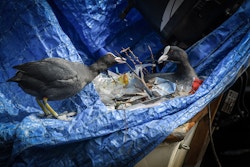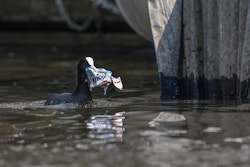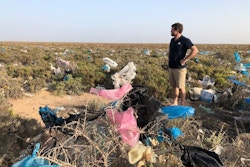Acting towards waste reduction: a big challenge
“Today, in Europe, we produce twice as much waste than we did 40 years ago. Which means that we have never that much produced, consumed, and discarded things than today.” The declaration of Brune Poirson, former Secretary of State for the Ecological Transition, is clear
On this annual European Waste Reduction week, and in a sanitary context where single use plastics have made a stupendous comeback, let’s analyze our waste management in France, and the solutions which allow us to imagine a less polluted future.
More than 300 million tons of waste in 2017
According to a report of the Ademe, published in September 2020, around 326 million tons of waste was produced in France in 2017. That represents 4,9 tons per resident per year, or the equivalent of the weight of one elephant in waste per person. Colossal numbers which are however declining in regard to statistics collected ten years ago, regarding household, company and building waste.
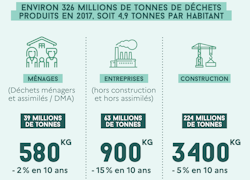
Key figures about waste in 2020 in France (in French only)
A progress which stays insufficient when we know that, for example, the national objectives for 2020 (as defined by the energy transition for green growth law of August 2015) were to reach a 10% reduction in household and related waste.
But what becomes our waste once collected? The survey shows that 66% of waste products are recycled or backfilled and 6% are used to produce energy, against 28% that are disposed of. During the last ten years, most of the recycling has increased at the expense of waste destruction, an encouraging evolution.
The carbon weight of objects: the tree that hides the forest
Waste management calls to a more global approach to all of the life cycle of each object in our daily life, from their purchase to the end of their use and the recycling of their components. A very instructive infographic from the Ademe about the subject goes right back to the beginning of the cycle, from the start of the production of our objects to their ecological cost.
“The most striking example is the smartphone: to collect a few grams of minerals necessary for the manufacture of the microchip it contains, you need to excavate 200 kg of matter.”
The hidden weight of our objects is particularly present in the manufacture of digital objects, when we take in account all of the raw materials having been used for their production. This is mind blowing when we look at the carbon footprint, or the CO2 emissions, generated all along the object’s life cycle, from the excavation of raw materials used to produce them up to their disposal at the end of their life cycle.
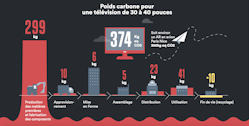
The carbon footprint of our objets (in French only)
2020, from the world after to stepping backwards
The last few years, 2020 especially, have been significant regarding French waste disposal politics. The energy transition for green growth law in 2015 had already given goals to reach for 2020 and 2025. But mainly, it is the anti-waste law from the beginning of the year which has helped us with talking the war against waste. With strong measures such as the obligation to give unsold alimentary goods to NGO’s and to recycle unsold non-alimentary goods, or by forbidding single use plastics, this law promised to accelerate the necessary transition towards a more sustainable world.

That was without counting on the major current event: the sanitary crisis which has impacted the entire planet. Quickly, the use of surgical masks and other types of protection have become the norm, moving us backwards on the use of single use plastics. Once again, waste products found themselves in huge quantities in nature, often ending up at sea. When we know that 80% of marine litter originate on land, this becomes an even bigger problem. In a nutshell, a year that started rather positively by several improvements, risks suffering from a new type of pollution that no one could have ever predicted.
What do we do ?
If we have been able to make a quick summary of the problems we face, the good news is that solutions don’t only exist, they are proliferating! Beyond the reglementary and industrious aspects, each and every one of us can contribute on its own level. From recycling to second hand buying through upgrading waste, many solutions already exist for us to build a more harmonious future which could be applicable in the entire world.
Here is our selection of ideas to act right now:
Make your babies nappies fertile thanks to the Alchimistes
Each year in France, we buy and 3,5 billion nappies. To valorize this waste, the Les Alchimistes start-up recovers the nappies organic matter and transforms it into compost.
Buy second hand through social media at the Ressourcerie like that of Montgeron
The ressourceries network in France exist since the 2000 decades. It has mainly evolved this last decade and intends today to become a primordial step in waste management and treatment.
Go for it and clean beaches like Final Straw
There is no age limit to taking action on behalf of the planet! This is evidenced by 70-year-old Pat Smith, who is fighting to put an end to the plastic waste, which is polluting beaches and destroying marine life in Cornwall.
And many more solutions exist! Let’s keep in mind that everywhere in the world, women and men open the way and spend their energy on creating sustainable solutions. Why not you?
